 Herring Gull- Zilvermeeuw (argentatus & argenteus)
Herring Gull- Zilvermeeuw (argentatus & argenteus)
(last update: December 15, 2011
Herring Gull - 3cy January

50 shades of grey - upperpart grey tones in gulls
Googling 'shades of grey', gulls may not be the first images turning up on your screen, and in fact and to much surprise, there may not be too many gulls in the story of the bestselling book. Still, the pictures are catching, even for the Dutch larophile and may juice the story below.
Several Nearctic species have been recorded in The Netherlands, like Ring-billed Gull, Bonapartes Gull and Franklin's Gull. Which species can be expected next? And which plumage may be the most rewarded to look for? Based on sightings of rare gulls in the Western Palearctic a list of species was created and birds were assigned to 5 groups. Every group contains rare species together with the most similar looking common species.

Siberian Rubythroath, Mongolia, René Pop. A very searched after rarity in The Netherlands, and in beauty, allure and thrill maybe approaching some of the gulls below.
First of all, of course one must at least have an open eye and open mind for identification, and not just ignore the mere possibility of a rare species to turn up on your local beach!

Ivory Gull adult, November 06 2010, California, USA, Brad Schram. Lets start to call this "grey tone = white"!
Ivory Gull is known to be attracted to corpses of e.g. dead seal, and it's a pity to see guards at the Dutch beaches quickly remove any dead mammal as soon as possible, to get a neat and clean beach again.

Ivory Gull adult, May 25 2007, Bering Sea, USA, Jomilo.

Ivory Gull juvenile, November 23 2012, Iceland, Bjarni.
Ivory Gull is an exceptional bird within a West European context, as it is the only gull with just a single moult in its annual cycle, while other species have a complete moult in summer and an additional partial moult in spring. Below is a picture of gull species plotted in annual cycli. Birds hatch halfway the calendar year (CY) and the white vertical lines indicate December 31, mid winter.
Some species, especially the smaller ones like Little Gull (top row) and Black-headed Gull (second row) attain adult plumage in 2 years (summer of their 3rd CY). Next rows illustrate the plumage development of Mediterranean Gull and Common Gull, species inwhich it takes 3 years to get the adult plumage. Lower rows illustrate Lesser Black-backed Gull, Herring Gull and Great Black-backed Gull.

Click image to see 4000 px width image, free to use (4,17 MB).
Group 1
Common Gull - Mew Gull - Ring-billed Gull
Group 2
Thayer’s Gull -
Kumlien’s Gull - Iceland Gull
Group 3
Great Black-backed Gull - Kelp Gull - Slaty-backed Gull
Group 4
Glaucous-winged Gull - Glaucous Gull
Group 5
Herring Gull - American Herring Gull - Vega Gull

Group 1 50 shades of grey: Common Gull - Mew Gull - Ring-billed Gull
Common Gull Larus canus is an abundant winter visitor and common breeding species in The Netherlands. Two Nearctic gulls look quite the same, but can be identified in all plumages. Ring-billed Gull delawarensis is a very common and widespread species in Canada and the USA, Mew Gull brachyrhynchus is a bird of the north-west and has the main winter area along the West Coast. Due to distant breeding grounds and their migration routes, the latter species may not be a prime candidate for turning up at our beaches, but nonetheless there have been claims. Ring-billed Gull is an annual vagrant to Europe and several birds (returning birds in winter) have been well documented in the past.
When seen well, Ring-billed Gull is characteristic in adult plumage, showing:
- black ring on yellow bill
- yellow iris
-
much black in wingtip, including broad sub-terminal band on P10
- small mirror on p10
- small white primary tips
- yellow legs
- pale grey upperparts, Kodak 4-5.

Ring-billed Gull delawarensis adult, April 2007, Toronto, Ontario, Canada (Wikipedia).
First cycle (first winter) Ring-billed Gull is a bird inbetween Common Gull canus and Herring Gull argentatus, especially female argenteus. Ring-billed Gulls first impression is a large Common Gull, od medium size with a pink-based bill and much contrast between back and wing-coverts. Like Comnmon Gull, they develop a grey back, 2nd gen scapulars in Herring Gull strongly patterned with anchor-shapes, and Ring-billed Gull may frequently replace wing-coverts in the post-juvenile moult (sse picture below, right bird), not replaced in Common Gull nor Herring Gull. Image below (left bird) shows the flat head and stronger bill than in Common Gull, and also the more chequered greater covert pattern (plain greater coverts in Common Gull, lacking barring and lining), but some Ring-billed Gulls may show plain greyish greater coverts as well, and remember when coverts have been replaced 2nd gen coverts are plain greyish as well.
 |
 |
| Common Gull canus adult, April 19 2006, Bergen, Norway, (Frode Falkenberg). Dark iris. | Mew Gull brachyrhynchus, June 14 2012, Denali NP, Alaska, (Glenda Suebee). Paler iris and slender, finer bill. |
Adult summer Mew Gull probably is not the first plumage to be expected in The Netherlands. Therefore this page focus on Mew Gull brachyrhynchus vs Common Gull canus in 1st cycle, 2nd cycle and adult winter plumage. Below is a list of "classic" differences, which may be more prominent on one bird than it is on the other, so please always consider individual variation in either taxon.
IMMATURE PLUMAGES, COMPARISON OF CANUS (LEFT) AND BRACHYRHYNCHUS (RIGHT).
In first cycle (= 1st winter) birds, all flight feathers (tail, secondaries and primaries) are still juvenile; as winter progresses the only process to consider is wear and bleaching. Hence, patterns on primaries and especially tail remain the same throughout the period until a complete moult in summer will replace all these larger feathers.
Mew Gull in first cycle is easily told apart from Common Gull by tail, uppertail coverts and rump. Like in many American gull species, the tail is largely blackish, and uppertail coverts are densely barred. In resting birds the most eye-catching feature is the solidly patterned pale brown hindneck, this texture continues on the side of the breast and may sometimes be apparent on most of the underparts. Once the mantle and scapulars are replaced in Mew Gull, there will be a strong contrast between these new grey feathers and the brown "shawl". In Common Gull the hindneck may be brown as well, but this is often blotchy and showing stripes or scaly pattern.
Below some example birds, with Common Gull canus (left) and Mew Gull brachyrhynchus (right).

COMMON GULLS FROM THE EAST, SSP KAMTSCHATSCHENSIS AND HEINEI.
West European canus is replaced graudually in central Russia by slightly larger ssp heinei, and further east by the even bigger ssp kamtschatschensis. Especially large male heinei can be safely identified on measurements in the hand; and every winter bring at least a few heinei into our region, as confirmed by trapped bird by ringers. However, also in the field some heinei can be identified in a group of Common Gulls, based on careful examination of open wing differences between heinei vs canus. In general, the wingtip pattern for heinei has more pigmentation and the grey tone on upperparts is distinctly darker. Subbtle differences in adult plumage:
(i) heinei more often show a deep black full subterminal band on P5; where canus normally has a thin, uneven or broken band, or black only on one web.
Sometimes, adult heinei may show a black spot on the outer-web of P4;
(ii) in heinei, black pigmentation extends all the way to the primary coverts on P8, where canus only has this black reaching 50-75% of the primary;
(iii) heinei shows extensive black on P7 (more than 80% of the way to the primary coverts); while canus has mostly less than 50%;
(iv) in heinei a long black 'bayonet' on the outer web of P6 extends for approximately 2/3 of the way to the primary coverts, while the maximum in Chris Gibbin's canus sample is 50%, with most having black only 20-40%.
The overall result of these details is a wingtip that has a lot more black and less white than canus.
Group 1
Common Gull - Mew Gull - Ring-billed Gull
Group 2
Thayer’s Gull -
Kumlien’s Gull - Iceland Gull
Group 3
Great Black-backed Gull - Kelp Gull - Slaty-backed Gull
 Herring
Gull A7KW 3cy (argenteus), January 11 2012, Calais, France (50.42N 1.34E).
Herring
Gull A7KW 3cy (argenteus), January 11 2012, Calais, France (50.42N 1.34E). Herring
Gull (argenteus) 3CY BTO GR-35599 January 23 2013, Boulogne-sur-Mer, NW France. Picture: Jean-Michel Sauvage.
Herring
Gull (argenteus) 3CY BTO GR-35599 January 23 2013, Boulogne-sur-Mer, NW France. Picture: Jean-Michel Sauvage. Herring Gull (argenteus) PZA.H 3CY, January 23 2017, Scheveningen, the Netherlands.
Herring Gull (argenteus) PZA.H 3CY, January 23 2017, Scheveningen, the Netherlands.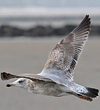 Herring Gull (argenteus) SHAC 3CY, January 17 2013, Koksijde, Belgium. Picture: Peter Adriaens.
Herring Gull (argenteus) SHAC 3CY, January 17 2013, Koksijde, Belgium. Picture: Peter Adriaens. Herring
Gull H-112075 3cy (argenteus), January 05 2002, Boulogne/Mer, France (50.42N 1.34E).
Herring
Gull H-112075 3cy (argenteus), January 05 2002, Boulogne/Mer, France (50.42N 1.34E). Herring
Gull H-108929 3cy (argenteus), January 05 2002, Boulogne/Mer, France (50.42N 1.34E).
Herring
Gull H-108929 3cy (argenteus), January 05 2002, Boulogne/Mer, France (50.42N 1.34E). Herring Gull (argenteus) 9||5 3CY, January - February 2019, Katwijk, the Netherlands.
Herring Gull (argenteus) 9||5 3CY, January - February 2019, Katwijk, the Netherlands. Herring Gull (argenteus) L|B 3CY, January 18 2019, Katwijk, the Netherlands.
Herring Gull (argenteus) L|B 3CY, January 18 2019, Katwijk, the Netherlands.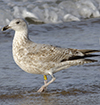 Herring Gull (argenteus) 1||F 3CY, January 21 2019, Katwijk, the Netherlands.
Herring Gull (argenteus) 1||F 3CY, January 21 2019, Katwijk, the Netherlands.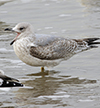 Herring Gull (argenteus) 3||U 3CY, January 14-18 2019, Katwijk, the Netherlands.
Herring Gull (argenteus) 3||U 3CY, January 14-18 2019, Katwijk, the Netherlands. Herring Gull (argenteus) 5||N 3CY, January 29 2019, Katwijk, the Netherlands.
Herring Gull (argenteus) 5||N 3CY, January 29 2019, Katwijk, the Netherlands. Herring Gull A||0 3CY, January 20 2017, Scheveningen, the Netherlands.
Herring Gull A||0 3CY, January 20 2017, Scheveningen, the Netherlands.  Herring Gull A||N 3CY, January 20-28 2017, Scheveningen, the Netherlands.
Herring Gull A||N 3CY, January 20-28 2017, Scheveningen, the Netherlands.  Herring Gull (argenteus) 8K / rr 3CY, January - February 2019, Katwijk, the Netherlands.
Herring Gull (argenteus) 8K / rr 3CY, January - February 2019, Katwijk, the Netherlands.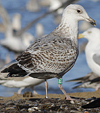 Herring Gull (argenteus) DJ 3CY, January 24 2017, Scheveningen, the Netherlands.
Herring Gull (argenteus) DJ 3CY, January 24 2017, Scheveningen, the Netherlands.  Herring Gull (argenteus) EK 3CY, January 23 2017, Scheveningen, the Netherlands.
Herring Gull (argenteus) EK 3CY, January 23 2017, Scheveningen, the Netherlands. Herring Gull (argenteus) JB 3CY, January & April 2017, Scheveningen & Katwijk, the Netherlands.
Herring Gull (argenteus) JB 3CY, January & April 2017, Scheveningen & Katwijk, the Netherlands. Herring Gull argenteus MW 3CY, January 28 2017, Scheveningen, the Netherlands.
Herring Gull argenteus MW 3CY, January 28 2017, Scheveningen, the Netherlands. Herring
Gull (argenteus) 3CY E4 January 16 2013, Boulogne-sur-Mer, NW France. Picture: Jean-Michel Sauvage.
Herring
Gull (argenteus) 3CY E4 January 16 2013, Boulogne-sur-Mer, NW France. Picture: Jean-Michel Sauvage.  Herring Gull (argenteus) K.CJM 2CY-3CY, October 2018 - February 2019, Katwijk, the Netherlands.
Herring Gull (argenteus) K.CJM 2CY-3CY, October 2018 - February 2019, Katwijk, the Netherlands. Herring Gull (argenteus) K.AZV 1CY-5CY, November 2013 - May 2017, the Netherlands.
Herring Gull (argenteus) K.AZV 1CY-5CY, November 2013 - May 2017, the Netherlands.  Herring Gull argenteus NLA 6.176.872 3CY, January 28 2017, Scheveningen, the Netherlands.
Herring Gull argenteus NLA 6.176.872 3CY, January 28 2017, Scheveningen, the Netherlands. Herring
Gull 5.463.321 3cy (argenteus), January 08 2012, IJmuiden, the Netherlands.
Herring
Gull 5.463.321 3cy (argenteus), January 08 2012, IJmuiden, the Netherlands. Herring
Gull 5.417.498 3cy (argenteus), January 08 2009, Ijmuiden, the Netherlands.
Herring
Gull 5.417.498 3cy (argenteus), January 08 2009, Ijmuiden, the Netherlands.
 Herring Gull 5.363.361 3cy (argenteus), January 23 2003, Ijmuiden, the Netherlands.
Herring Gull 5.363.361 3cy (argenteus), January 23 2003, Ijmuiden, the Netherlands.
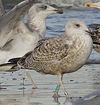 Herring Gull (argentatus) X4X4 3CY, January 20 2017, Scheveningen, the Netherlands.
Herring Gull (argentatus) X4X4 3CY, January 20 2017, Scheveningen, the Netherlands.  Herring Gull (argentatus) HNR4 3CY, January 23 2017, Scheveningen, the Netherlands.
Herring Gull (argentatus) HNR4 3CY, January 23 2017, Scheveningen, the Netherlands.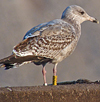 Herring Gull (argentatus) HX393 3CY, January 31 2014, Barneveld, the Netherlands. Picture: Frank van der Meer.
Herring Gull (argentatus) HX393 3CY, January 31 2014, Barneveld, the Netherlands. Picture: Frank van der Meer..jpg) Herring
Gull J2145 3cy (argentatus), January-February 2012, Scheveningen, Netherlands.
Herring
Gull J2145 3cy (argentatus), January-February 2012, Scheveningen, Netherlands. Herring
Gull J2701 3cy (argentatus), January 04 2012, Neeltje Jans, Zeeland, The Netherlands (51°36'58"N 003°41'32"E). Picture: Pim Wolf.
Herring
Gull J2701 3cy (argentatus), January 04 2012, Neeltje Jans, Zeeland, The Netherlands (51°36'58"N 003°41'32"E). Picture: Pim Wolf. Herring Gull (argentatus) J3961 3CY, January 09 2013, Sandøya, Norway. Picture: Ingar Støyle Bringsvor.
Herring Gull (argentatus) J3961 3CY, January 09 2013, Sandøya, Norway. Picture: Ingar Støyle Bringsvor. Herring Gull (argentatus) J4239 3CY, January 08 2015, Boulogne-sur-Mer, France. Picture Jean-Michel Sauvage.
Herring Gull (argentatus) J4239 3CY, January 08 2015, Boulogne-sur-Mer, France. Picture Jean-Michel Sauvage. Herring Gull argentatus J6391 3CY, January 18 2015, Vest-Agder, Norway. Picture: Nils Helge Lorentzen.
Herring Gull argentatus J6391 3CY, January 18 2015, Vest-Agder, Norway. Picture: Nils Helge Lorentzen.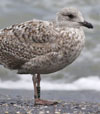 Herring
Gull JN336 3cy (argentatus), January 09 2012, Neeltje Jans, Zeeland, The Netherlands (51°36'58"N 003°41'32"E). Picture: Pim Wolf.
Herring
Gull JN336 3cy (argentatus), January 09 2012, Neeltje Jans, Zeeland, The Netherlands (51°36'58"N 003°41'32"E). Picture: Pim Wolf.  Herring
Gull JC98 3cy (argentatus), January 15 2008, Den Haag, the Netherlands. Picture: Ies Meulmeester.
Herring
Gull JC98 3cy (argentatus), January 15 2008, Den Haag, the Netherlands. Picture: Ies Meulmeester. Herring
Gull C033V 3cy (argentatus), January 15 2004, Lubna rubbish dump, Poland (52°02'N 21°08'E).
Herring
Gull C033V 3cy (argentatus), January 15 2004, Lubna rubbish dump, Poland (52°02'N 21°08'E). Herring
Gull C253R 3cy (argentatus), January 13-15 2004, Lubna rubbish dump, Poland (52°02'N
21°08'E).
Herring
Gull C253R 3cy (argentatus), January 13-15 2004, Lubna rubbish dump, Poland (52°02'N
21°08'E). Herring
Gull KA80 3cy (argentatus), January 15 2004, Lubna rubbish dump, Poland (52°02'N 21°08'E).
Herring
Gull KA80 3cy (argentatus), January 15 2004, Lubna rubbish dump, Poland (52°02'N 21°08'E). Herring
Gull KV48 3cy (argentatus), January 2008, Boulogne/Mer, France.
Herring
Gull KV48 3cy (argentatus), January 2008, Boulogne/Mer, France. Herring Gull 3CY, January 16 2018, Katwijk, the Netherlands.
Herring Gull 3CY, January 16 2018, Katwijk, the Netherlands.  Herring Gull 3CY, January 16 2018, Katwijk, the Netherlands.
Herring Gull 3CY, January 16 2018, Katwijk, the Netherlands.  Herring Gull 3CY, January 16 2018, Katwijk, the Netherlands.
Herring Gull 3CY, January 16 2018, Katwijk, the Netherlands.  Herring Gull 3CY, January 16 2018, Katwijk, the Netherlands.
Herring Gull 3CY, January 16 2018, Katwijk, the Netherlands.  Herring Gull 3CY, January 16 2018, Katwijk, the Netherlands.
Herring Gull 3CY, January 16 2018, Katwijk, the Netherlands.  Herring Gull 3CY, January 16 2018, Katwijk, the Netherlands.
Herring Gull 3CY, January 16 2018, Katwijk, the Netherlands. 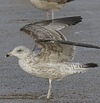 Herring Gull 3CY, January 16 2018, Katwijk, the Netherlands.
Herring Gull 3CY, January 16 2018, Katwijk, the Netherlands.  Herring Gull 3CY, January 16 2018, Katwijk, the Netherlands.
Herring Gull 3CY, January 16 2018, Katwijk, the Netherlands.
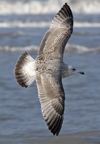 Herring
Gull 3cy, January 23 2013, Katwijk, the Netherlands.
Herring
Gull 3cy, January 23 2013, Katwijk, the Netherlands. Herring
Gull 3cy, January 23 2013, Katwijk, the Netherlands.
Herring
Gull 3cy, January 23 2013, Katwijk, the Netherlands. Herring
Gull 3cy, January 23 2013, Katwijk, the Netherlands.
Herring
Gull 3cy, January 23 2013, Katwijk, the Netherlands.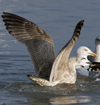 Herring
Gull 3cy, January 23 2013, Katwijk, the Netherlands.
Herring
Gull 3cy, January 23 2013, Katwijk, the Netherlands.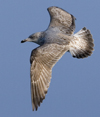 Herring
Gull 3cy, January 23 2013, Katwijk, the Netherlands.
Herring
Gull 3cy, January 23 2013, Katwijk, the Netherlands. Herring
Gull 3cy, January 23 2013, Katwijk, the Netherlands.
Herring
Gull 3cy, January 23 2013, Katwijk, the Netherlands. Herring
Gull 3cy, January 23 2013, Katwijk, the Netherlands.
Herring
Gull 3cy, January 23 2013, Katwijk, the Netherlands.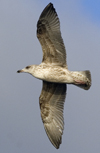 Herring
Gull 3cy, January 06 2012, Katwijk, the Netherlands.
Herring
Gull 3cy, January 06 2012, Katwijk, the Netherlands. Herring
Gull 3cy, January 16 2013, Katwijk, the Netherlands.
Herring
Gull 3cy, January 16 2013, Katwijk, the Netherlands.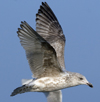 Herring
Gull 3cy, January 23 2013, Katwijk, the Netherlands.
Herring
Gull 3cy, January 23 2013, Katwijk, the Netherlands.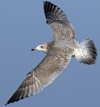 Herring
Gull 3cy, January 23 2013, Katwijk, the Netherlands.
Herring
Gull 3cy, January 23 2013, Katwijk, the Netherlands.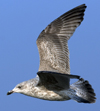 Herring
Gull 3cy, January 23 2013, Katwijk, the Netherlands.
Herring
Gull 3cy, January 23 2013, Katwijk, the Netherlands. Herring
Gull 3cy, January 23 2013, Katwijk, the Netherlands.
Herring
Gull 3cy, January 23 2013, Katwijk, the Netherlands. Herring
Gull 3cy, January 23 2013, Katwijk, the Netherlands.
Herring
Gull 3cy, January 23 2013, Katwijk, the Netherlands. Herring
Gull 3cy, January 23 2013, Katwijk, the Netherlands.
Herring
Gull 3cy, January 23 2013, Katwijk, the Netherlands. Herring
Gull 3cy (argenteus), January 06 2012, Katwijk, the Netherlands.
Herring
Gull 3cy (argenteus), January 06 2012, Katwijk, the Netherlands. Herring
Gull 3cy (argentatus), January 20 2012, Scheveningen, the Netherlands.
Herring
Gull 3cy (argentatus), January 20 2012, Scheveningen, the Netherlands. Herring
Gull 3cy (argentatus), January 16 2013, Katwijk, the Netherlands.
Herring
Gull 3cy (argentatus), January 16 2013, Katwijk, the Netherlands.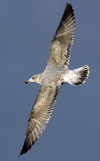 Herring
Gull 3cy, January 06 2012, Katwijk, the Netherlands.
Herring
Gull 3cy, January 06 2012, Katwijk, the Netherlands. Herring
Gull 3cy, January 16 2013, Katwijk, the Netherlands.
Herring
Gull 3cy, January 16 2013, Katwijk, the Netherlands.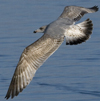 Herring
Gull 3cy, January 16 2013, Katwijk, the Netherlands.
Herring
Gull 3cy, January 16 2013, Katwijk, the Netherlands. Herring
Gull 3cy, January 16 2013, Katwijk, the Netherlands.
Herring
Gull 3cy, January 16 2013, Katwijk, the Netherlands.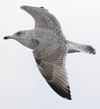 Herring
Gull 3cy (argentatus), January 20 2012, Scheveningen, the Netherlands.
Herring
Gull 3cy (argentatus), January 20 2012, Scheveningen, the Netherlands. Herring
Gull 3cy, January 16 2013, Katwijk, the Netherlands.
Herring
Gull 3cy, January 16 2013, Katwijk, the Netherlands. Herring
Gull 3cy, 4cy & adult, January 16 2013, Katwijk, the Netherlands.
Herring
Gull 3cy, 4cy & adult, January 16 2013, Katwijk, the Netherlands. Herring
Gull 3cy (argentatus), January 06 2012, Katwijk, the Netherlands.
Herring
Gull 3cy (argentatus), January 06 2012, Katwijk, the Netherlands. Herring
Gull 3cy (argentatus), January 06 2012, Katwijk, the Netherlands.
Herring
Gull 3cy (argentatus), January 06 2012, Katwijk, the Netherlands. Herring
Gull 3cy, January 16 2013, Katwijk, the Netherlands.
Herring
Gull 3cy, January 16 2013, Katwijk, the Netherlands.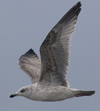 Herring
Gull 3cy (argentatus), January 20 2012, Scheveningen, the Netherlands.
Herring
Gull 3cy (argentatus), January 20 2012, Scheveningen, the Netherlands. Herring
Gull 3cy (argentatus), January 20 2012, Scheveningen, the Netherlands.
Herring
Gull 3cy (argentatus), January 20 2012, Scheveningen, the Netherlands. Herring
Gull 3cy (argentatus), January 04 2002, Boulogne/Mer, France (50.42N 1.34E).
Herring
Gull 3cy (argentatus), January 04 2002, Boulogne/Mer, France (50.42N 1.34E). Herring
Gull 3cy (argentatus), January 04 2002, Boulogne/Mer, France (50.42N 1.34E).
Herring
Gull 3cy (argentatus), January 04 2002, Boulogne/Mer, France (50.42N 1.34E). Herring
Gull 3cy (argentatus), January 04 2002, Boulogne/Mer, France (50.42N 1.34E).
Herring
Gull 3cy (argentatus), January 04 2002, Boulogne/Mer, France (50.42N 1.34E).


























































